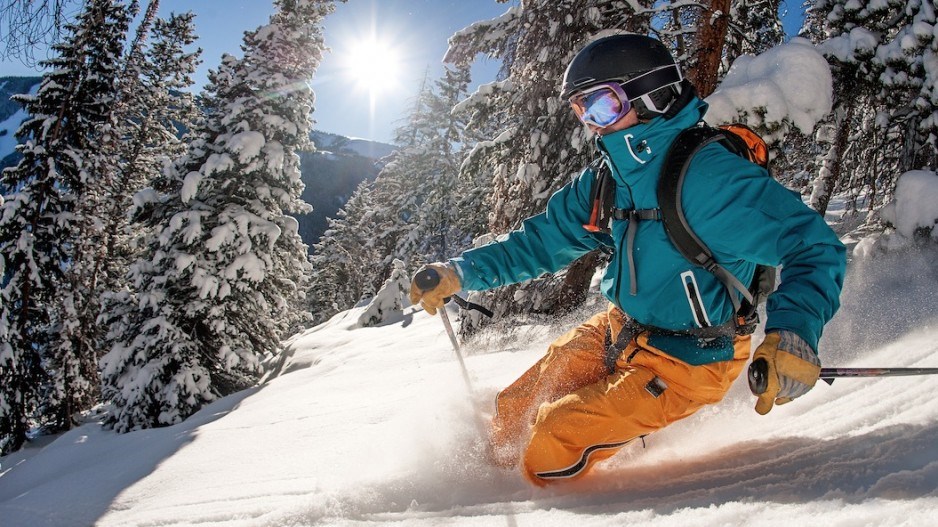B.C.'s tourism sector is expecting a banner autumn and winter season thanks to Canada ending COVID-19 travel restrictions and the loonie falling in value compared with the U.S. dollar.
Unvaccinated people started to be able to visit Canada as of October 1, widening the pool of potential tourists to the province.
Canada also ended its requirement that travellers wear masks on planes, trains and buses, making it more comfortable to travel. Random COVID-19 testing at airports has ceased, minimizing inconvenience for tourists.
That liberalization is expected to have a much bigger effect in attracting Americans than will the soaring U.S. dollar, according to longtime executives in the tourism sector.
The Canadian dollar rose above US$0.81 last October. It recently traded below US$0.73, undoubtedly piquing interest from some Americans who follow exchange rates.
“Typically, the exchange rate doesn’t show up in the top three, four or five things that might motivate an American to plan a trip to Canada,” said Destination Vancouver CEO Royce Chwin.
“Canadians are 10 times more sensitive to the exchange rate because we’re almost always on the opposite end of the stick.”
BC Restaurant and Foodservices Association CEO Ian Tostenson agreed.
“There’s usually a lack of awareness by American travellers about when there are large discrepancies in currency valuation.”
Tostenson added that he observed that lack of awareness briefly in 2015 and in the early 2000s, when the Canadian dollar was trading around where it is now.
The upshot, however, is that Americans who do visit Canada may be pleasantly surprised with how far their currency has gone up, and will wind up lavishly spending on expensive restaurant meals and hotels, Tostenson said.
Another consequence of the greenback soaring in value compared with the loonie is that it could deter Canadians from shopping and vacationing in the U.S. and prompt them to vacation at home instead.
Destination British Columbia statistics show that the largest source of tourists to B.C. is British Columbians – 49 per cent of trips that amount to 29 per cent of visitor spending. That high percentage means that even a slight bump in the number of Canadians travelling at home could make a difference for the tourism sector.
The next largest group of visitors to B.C. is Canadians from the rest of the country – 24 per cent of trips and 23 per cent of visitor spending. After that comes Americans, with 18 per cent of trips and 20 per cent of spending.
International travellers account for about 10 per cent of visits but an outsized 27 per cent of spending.
With non-U.S. international visitors by far spending more per-capita than other visitors, it may be a concern that the largest sources of those visitors are countries with currencies that have fallen compared with the U.S. and Canadian dollars – currency differentials that may deter visits.
China pre-pandemic was the largest source of non-U.S. international visitors to B.C. Its currency hit an all-time low against the U.S. dollar in September and is down about 2.3 per cent versus the loonie year over year.
The U.K. was the next largest pre-pandemic source of non-U.S. foreign visitors to B.C., and its currency fell to an all-time low against the dollar in early October. At that time it had fallen by about 19 per cent versus the U.S. dollar and about 12 per cent versus the loonie year over year.
Destination British Columbia recently launched a campaign to attract Brits and Aussies.
There remains a challenge to attract Americans, and that is why Destination Vancouver this month launched a marketing campaign in Washington state and California, Chwin told BIV.
While the 674,047 Americans who visited Canada through B.C. entry points in July was more than 15 times higher than the 43,961 Americans who made those trips in July 2021, the number of American visitors in July remained at only 73 per cent of the 922,867 Americans who made those trips in July 2019.
“U.S. visitation has been slow to return to Canada, so the removal of [COVID-19 travel] restrictions will certainly help improve demand,” said Tourism Whistler spokeswoman Mandy Rousseau.
“Bookings over key U.S. holiday dates are nearing the pre-pandemic pace, which indicates that there is interest from U.S. travellers to come to Whistler, and we are hearing anecdotally from our accommodation providers that U.S. demand is starting to materialize.”
BC Hotel Association CEO Ingrid Jarrett also believes that U.S. travel will start to return to where it was pre-pandemic.
“Now the borders are wide open, we could well see a real surge in the fall – that’s what we hope,” she said.
“Corporate travel tends to need a longer lead time, but [the low Loonie means] there will be a compelling value proposition for Americans.” •




